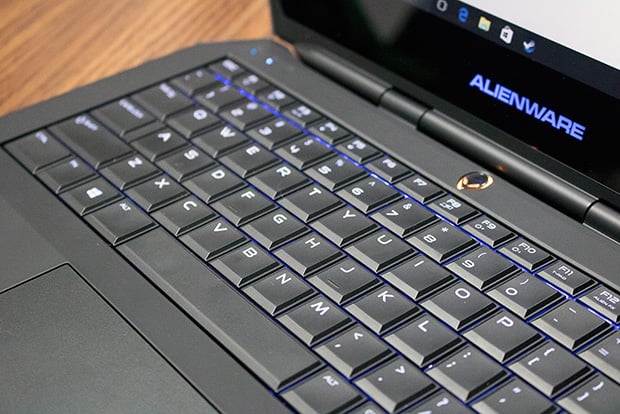Alienware 13 R2 Gaming Laptop And Graphics AMP Review
When the laptop is running, LED strips embedded into two of the lines glow blue, as does the Alienware logo at the top, which you can change or disable using the included AlienFX software. There's a definite gamer vibe going on here, one that would look out of place in board room meeting for an insurance firm.

If you opt for the QHD+ display, you get a premium IPS (in-plane switching) panel built with IGZO (indium gallium zinc oxide) transistors driving the backplane. The advantage IGZO transistors have over standard amorphous silicon is higher electron mobility, which in turn leads to lower power consumption and less flicker. IGZO is one of the reasons why manufacturers can offer higher resolutions in smaller displays without completely borking battery life.
The QHD+ display option also supports touch, and it just so happens that another benefit of IGZO is less noise interference compared to traditional touch displays. In theory, touch panels with IGZO should be more sensitive to touch operation, especially when using thin input devices like the tip of a pen. As it applies to the Alienware 13 R2, it's more of an "Oh, cool" Snapple fact versus a real-world benefit.

There's an adjustable backlight, which like the lighting effects on the lid can be controlled through the bundled AlienFX utility. You can also turn it off altogether to squeeze out additional battery life, provided it's needed (let's be real, if you're playing a game, you won't want to wander far from a power outlet).
Some of the Function keys include secondary functions, like brightness controls, turning Wi-Fi off and on, and enabling/disabling lighting effects. What you don't get is a dedicated number pad (there's just not enough room on a 13-inch laptop) or any macro keys.

On our unit, a soft-tap is all it took to initiate a left-click, whereas a right-click input required actually pressing down where the right-button would be until there's an audible (and tactile) click. While frustrating at first, it's a pretty useful differentiation once the separate click actions become habit.


It's a little more bare on the right side, which consists of a Thunderbolt 3 (USB Type-C) port, USB 3.0 port, and an RJ-45 Gigabit Ethernet port.
There are two more ports to be found, both on the back. One is the external graphics port that connects to the Alienware Graphics Amplifier and the other is an HDMI 2.0 output.

Before you take apart the laptop, we suggest referencing Alienware's handy service manual (PDF) with detailed instructions on how to remove and replace a wide variety of parts and components.







